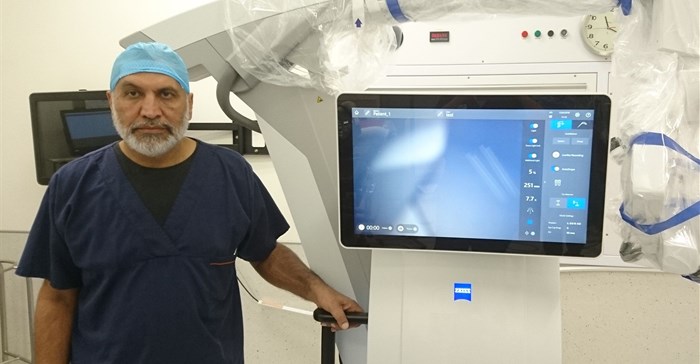
Neurosurgery has numerous challenges inherent to it, largely due to the extremely delicate structures in the brain and other parts of the nervous system. “The greatest care needs to be taken when undertaking procedures within these areas. It is important therefore for us as neurosurgeons to be able to visualise the anatomy as clearly as possible. We need to be able to easily differentiate the normal anatomical structures from abnormal or diseased tissue,” says Dr Yusuf Osman, a neurosurgeon practicsng at the hospital.
The Zeiss Kinevo 900 microscope system provides 3D visualisation of the brain, spine and other parts of the nervous system and will be extremely useful to neurosurgeons in diagnosing problems, as well as to guide a range of intricate procedures to treat abnormalities of, and diseased tissue within, the nervous system.
Osman and his team were trained on the system before undertaking a number of procedures to treat brain tumours, malformations in the brain stem and spine tumours.
“This visualisation technology will also prove its worth in various other neurological procedures, including the treatment of blood vessel abnormalities in the brain and slipped discs in the spine. The equipment has a special micro inspection tool that has increased the scope of visualisation of the anatomy and pathologies, or diseased structures, even around corners, which earlier forms of this technology are not capable of.
“With surgeon-controlled robotics to assist in focusing, magnifying and visualising precisely and effortlessly, it is also a great deal easier to operate than other. The robotics of the system is designed to allow intelligent rather than manual positioning, enabling precision positioning with much less effort. This enables the surgeon to exclusively focus on the site of treatment. It also provides rock solid stability and minimises time-consuming efforts in planning even the most challenging neurosurgeries,” Osman says.
The microscope has the facility to record surgical procedures which can then be downloaded to other devices. This gives the surgeon the opportunity to review the procedure, as well as to easily discuss cases and share knowledge with colleagues.